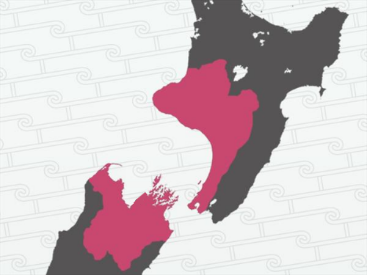
Te Puni Kōkiri measures a range of outcomes that fall within Whakapapa (te reo Māori and connection to iwi), Oranga (whānau well-being and whānau housing), Whairawa (whenua and whanaketanga), and Whanaungatanga (Crown-Māori relationships). This publication provides an insight into the growth and development of Māori within these outcomes in the Te Tai Hauāuru region.

Te Puni Kōkiri has produced a Te Tai Hauāuru Regional Profile 2017 based on data sourced from Statistics NZ including
Census and Subnational Ethnic Population Projections: 2013-2023, as well as data from Ministry of Education, Ministry for Social Development, Ministry of Health, and the Electoral Commission.
The demographic structure of the Te Tai Hauāuru population for 2013-2023 shows a 20% Māori growth rate over the ten year period which is comparable with the national Māori growth rate. By 2023 the number of Māori aged 15 to 64 years will grow by 19%. The number of Māori aged 65 years or more will grow 76%.
The Te Tai Hauāuru Regional Profile 2017 shows improvement across many outcomes.
Most tamariki Māori have participated in early childhood education and nine in ten tamariki are immunised.
Over three-quarters of Māori 18 year olds have a NCEA level 2 (or above) qualification and more Māori households have higher qualifications at Level 7/Bachelors or above.
Māori household incomes have increased in Te Tai Hauāuru by 9% however our Māori median weekly income of $1,348 compared to non-Māori median weekly income of $1,552 is a reflection of more Māori earning lower incomes and less Māori earning higher incomes.
Nearly three-quarters (72%) of enrolled Māori voted in the 2014 general election compared to non-Māori (81%).
There has been a slight decline in the number of Māori in Te Tai Hauāuru who speak te reo Maori (23% to 20%) but a 5% increase rate of more Māori knowing their iwi affiliations.
The number of Māori households has increased with the highest rate of growth being households with two or more families. The number of Māori households needing two or more additional bedrooms has decreased but the number of Māori rental households under housing stress has increased – although a comparable increase for non-Māori.
More Māori authorities are operating in Te Tai Hauāuru and Māori businesses are employing more than 10,000 people.
If you have any enquiries about the data and the publication please email research@tpk.govt.nz
- About: Demographics
- Published in 2017